Aston Villa celebrates 125 years of Villa Park on Sunday, April 17.
The club moved to Aston Lower Grounds, as it was known, in 1897, and Villa have enjoyed many memorable moments, milestones and matches at our famous home ever since.
Here, we countdown 125 of the biggest and best moments in Villa Park’s history…
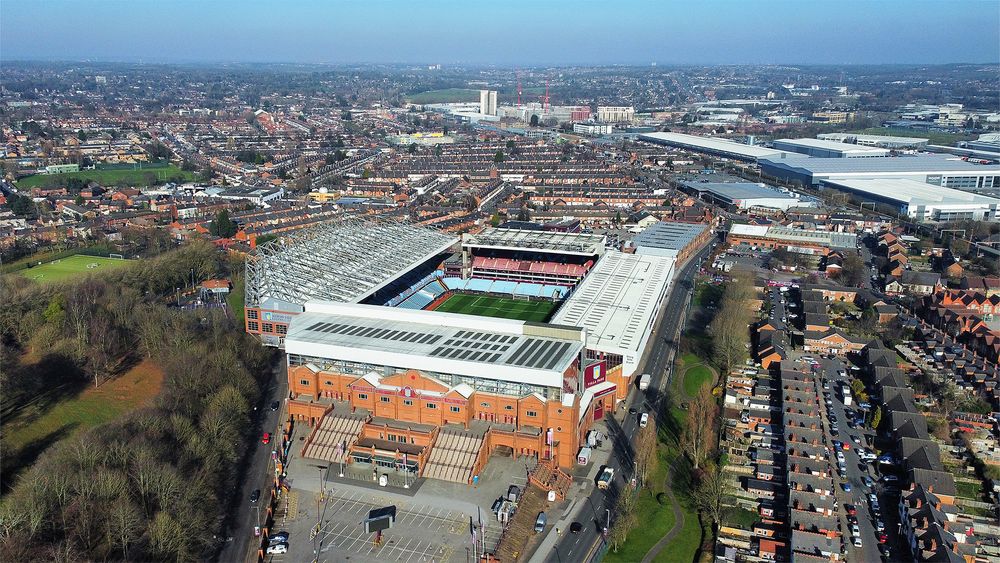
1. A week after clinching a League and Cup double, Villa play their first game at Villa Park (then known as the Aston Lower Grounds) beating Blackburn Rovers 3-0 on Saturday 17th April 1897. The main stand is situated in Witton Lane, with a barrel-shaped roof offering shelter for supporters standing on the Trinity Road side of the ground.
2. Poor weather keeps the attendance for the Blackburn match down to 14,000 but 48 hours later the 5-0 Easter Monday victory over Wolves is watched by a crowd of around 35,000.
3. A record attendance is set in January 1898 when a crowd of 42,000 witness a 2-1 defeat by champions-elect Sheffield United.
4. In April 1898, we host a representative match between the Football League and the Scottish League, the Scots winning 2-1.
5. The first international match is played here on 8th April 1899, England beating Scotland 2-1 with a line-up including Villa duo Charlie Athersmith and Jimmy Crabtree.
6. On the final day of the 1898-99 season, Villa thrash title rivals Liverpool 5-0 to become League champions for the fourth time.
7. During the summer of 1899, curving wing stands are added to the original barrel roof to provide extra cover for fans standing on the Trinity Road terraces.
8. Billy Garraty scores the first FA Cup goal at our new home in January 1900, in a first round replay against Manchester City.
9. Another attendance record is set in March 1900, with 51,000 packing in for a 1-1 draw against Sheffield United. Villa go on to retain the title.
10. The first of the venue’s 55 FA Cup semi-finals is staged on 8th April 1901, Tottenham Hotspur beating West Bromwich Albion 4-0.
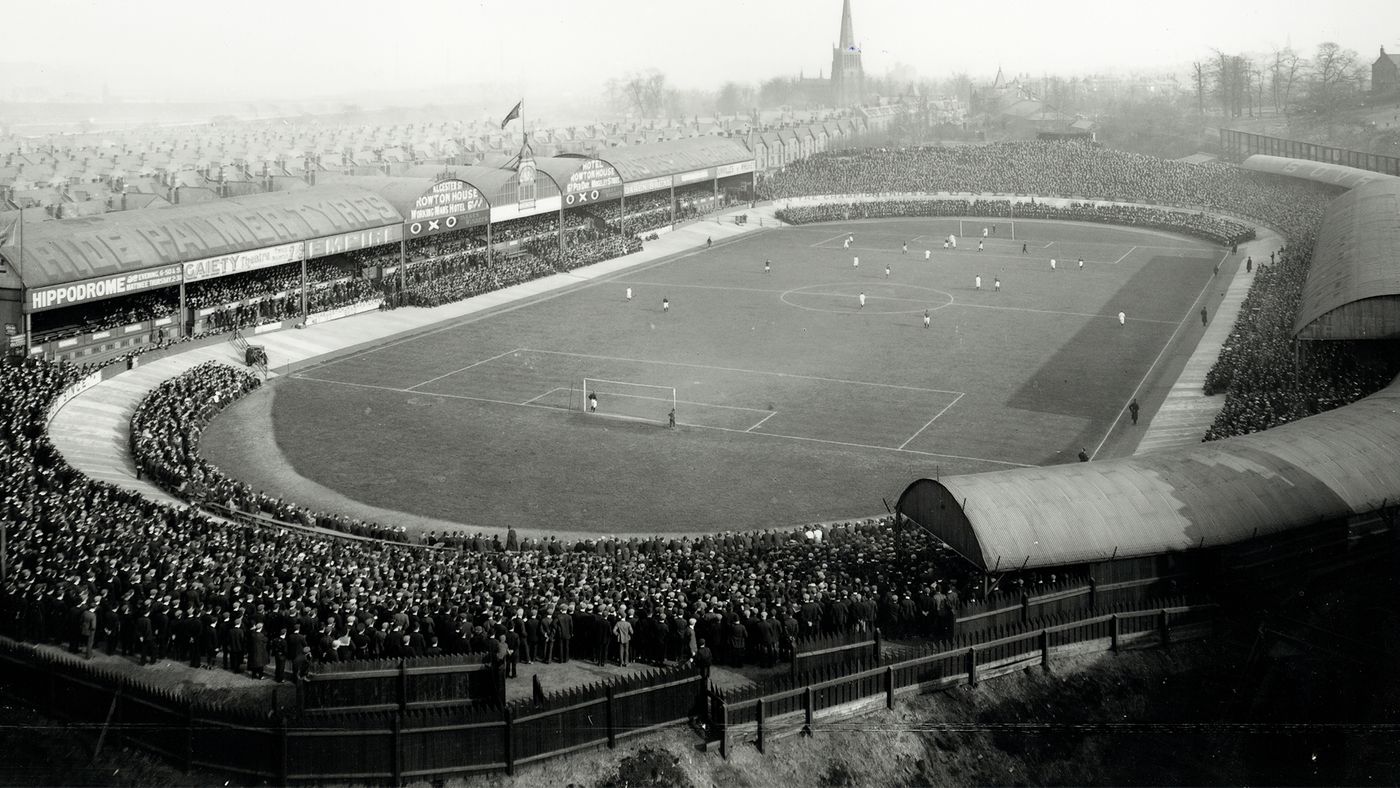
Villa Park. 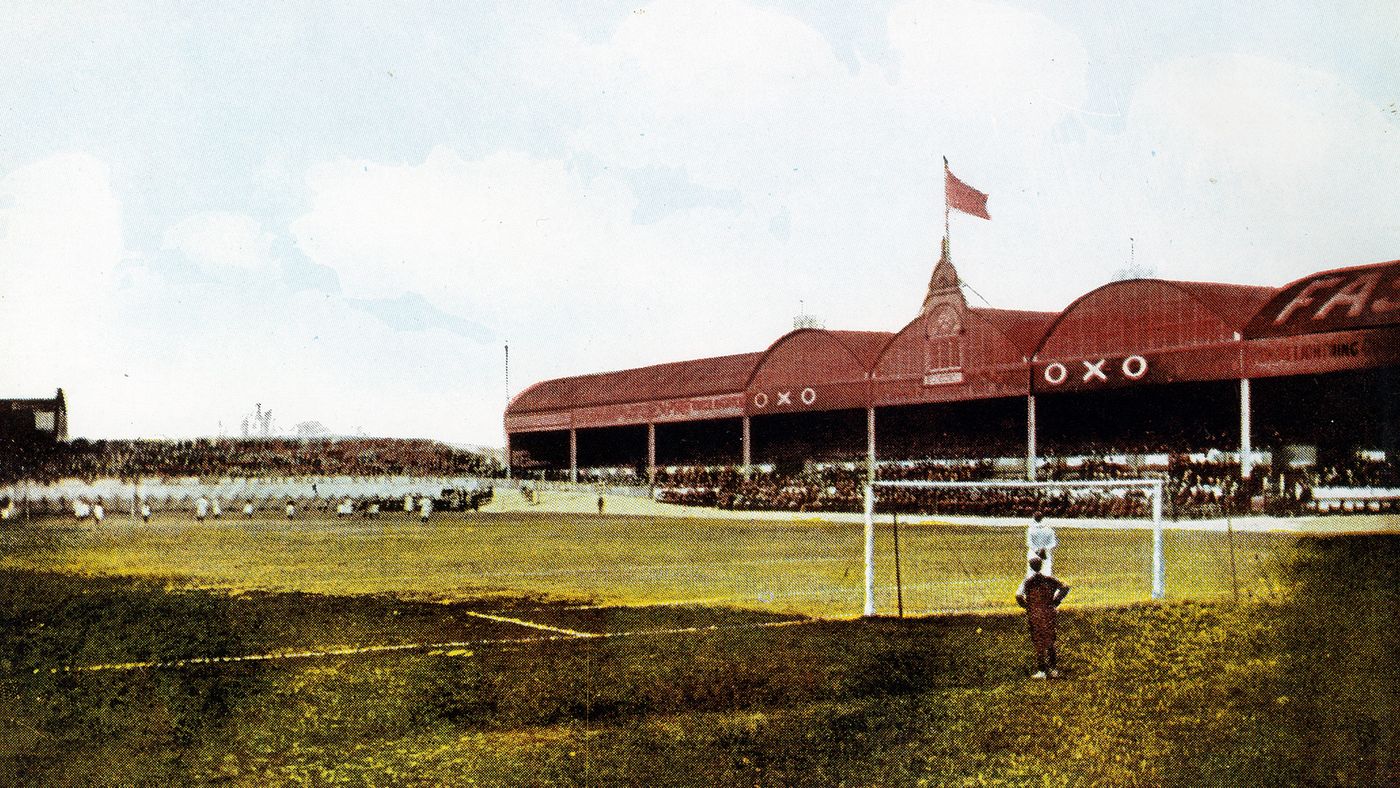
Villa Park. 
Villa Park. 
Villa Park. 
Villa Park. 
Villa Park.
11. Our first international of the 20th century is a 2-2 draw between England and Scotland in May 1902.
12. Warwickshire CCC hire Villa’s trackside bench seats for the visit of Australia to Edgbaston in the summer of 1902, earning the club 10 guineas (£10.50 in today’s money).
13. From 1907, the Lower Grounds becomes more commonly known as Villa Park.
14. Half-time scoreboards are used for the first time on 1st September 1906, for the opening day match against Blackburn Rovers. The games also marks the first issue of the Villa News & Record.
15. The first Rugby League test series is secured by Great Britain at Villa Park in February 1909, when they beat the touring Australian Kangaroos 6–5.
16. Having previously rented the ground, the club become freeholders in 1911, purchasing the site for a total of £11,250.
17. Harry Hampton, the club’s record league marksman, becomes the first Villa player to score five goals in one game as Sheffield Wednesday are thrashed 10-0 here on 5th October 1912.
18. Two weeks later, in the next home game, Harold Halse repeats the feat, netting all five goals in a 5-1 victory over Derby County.
19. The cycle track, which has surrounded the pitch since the ground opened, is removed in 1913.
20. A few days after beating Sunderland in the 1913 Cup Final, the teams meet again at Villa Park in a top-of-the-table clash. Around 60,000 watch the 1-1 draw, with one report suggesting that 38,000 are locked out!
21. Plans to expand the stadium to a 104,000 capacity arena are announced in 1914 – only for the project to be scuppered by the outbreak of the First World War.
22. During the Great War the ground is used by the British army for billeting.
23. Record scorer Billy Walker scores the first of his 159 Villa Park goals by netting twice on his debut in a first round FA Cup victory over QPR in January 1920.
24. Walker becomes the first Villa player to score a hat-trick of penalties in a 7-1 romp against Bradford City in November 1921.
25. After years as a covered terrace, the new Trinity Road becomes the ground’s main stand when it is opened in 1923. It is regarded as the best stand in Britain.
26. The ground’s first Royal visit sees the Duke of York – the future King of England – attend a 1-0 victory over Bolton in January 1924.
27. In August 1925, Villa record their highest-ever opening day win, a 10-0 drubbing of Burnley, including five goals from Len Capewell.
28. Villa’s record crowd for a reserve match is 23,667 for Tom “Pongo” Waring’s debut against Birmingham City reserves in February 1928.
29. A crowd of 73,632 – a record for a midweek game at Villa Park – attend a third-round FA Cup replay against Arsenal in January 1931.
30. A 7-1 victory over Middlesbrough on 25th December 1931 is Villa’s highest Christmas Day victory.
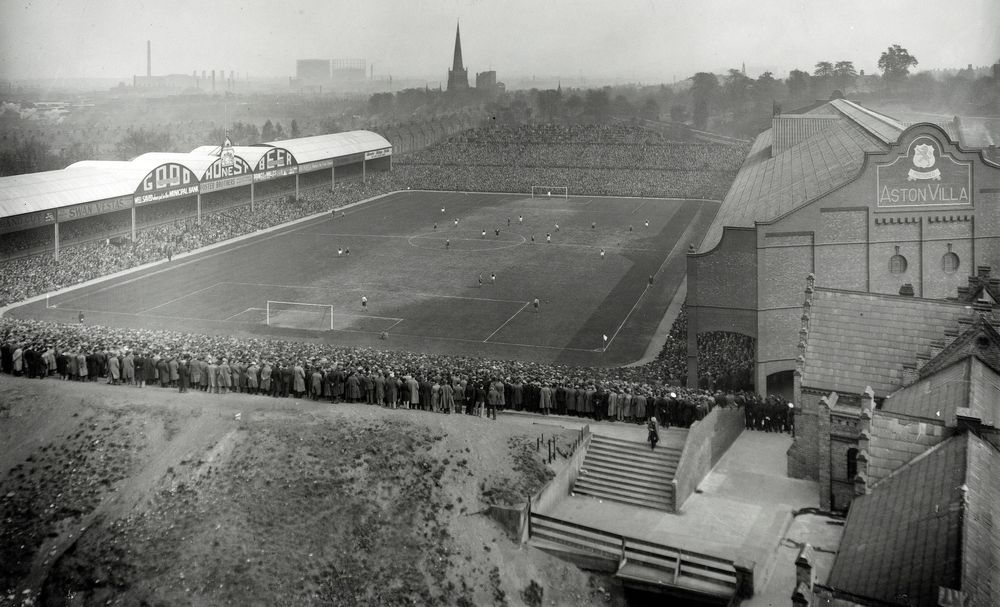
31. Villa are 2-1 winners over Wolves in August 1934 in the first home match under Jimmy McMullan, the first manager in the club’s history.
32. The 67,271 attendance against Coventry City in October 1937 remains an all-time record for the Second Division,
33. The Holte End terrace is expanded during 1939, making it the largest behind-the-goal enclosure in Europe.
34. Villa’s players wear numbered shirts for the first time in the opening game of the 1939-40 season, a 2-0 home victory over Middlesbrough.
35. Forty-eight hours later, on Monday 28th August, Villa lose 2-1 at home to Everton in what proves to be Villa Park’s last League game for seven years. Britain declares war against Germany the following weekend.
36. Throughout the Second World War, various parts of the Trinity Road stand are used to store ammunition and the home dressing room is occupied by a rifle company of the 9th Battalion Royal Warwickshire Regiment.
37. A 19-2 win over RAF Lichfield in March 1942 is the highest score ever recorded at the ground, although the match is watched by just 800 people.
38. The Witton Lane stand is hit by a bomb during the war, with 1,000 seats still missing at the Witton end of the stand when football resumes on a regular basis.
39. A public address system is installed in the 1940s. Previously, any team changes to the line-up printed in the programme had been chalked on a board and paraded around the perimeter track
40. In May 1944, Villa beat Blackpool 4-2 in front of 54,824 to win the Football League War Cup. (Pictured below with the trophy.)
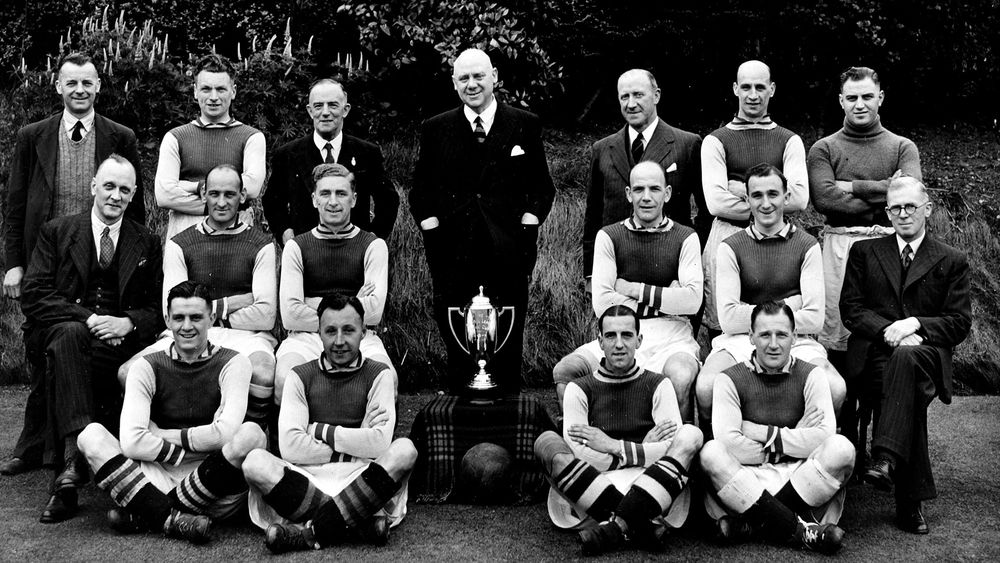
41. Villa’s FA Cup quarter-final against Derby County in March 1946 attracts a crowd of 76,588 – Villa Park’s record attendance.
42. In June 1948, Villa Park hosts the British middleweight title fight, Dick Turpin beating Vince Hawkins on points to become the first black man to win a British boxing title.
43. Home attendances for the 1948-49 campaign average 47,168, the highest in the club’s history.
44. That figure includes a crowd of 69,191 – a record for a League game here – for the visit of Arsenal in January 1949.
45. In June 1951, Princess Elizabeth – our current Queen – attends a display of physical exercise and games on the pitch, involving 250 schoolchildren. The event is staged as part of the Festival of Britain.
46. Goals from Dave Walsh, Johnny Dixon and Billy Goffin earn a 3-3 draw against Wolves in 1951, in the last Christmas Day match to be played here.
47. Floodlights are installed at Villa Park in the summer of 1958 at a cost of £31,283. The new lights are switched on at half-time in the 3-2 victory over Portsmouth on Monday 25th
48. Villa 11 Charlton 1 – our highest score in an official game at Villa Park features five goals from Gerry Hitchens in November 1959.
49. Villa’s first League Cup tie results in a 4-1 home win over Huddersfield Town in October 1960, Hitchens netting our first goal in the new competition.
50. Villa go on to win the inaugural League Cup, beating Rotherham United 3-0 after extra-time in the second leg of the final on 5th September 1961.
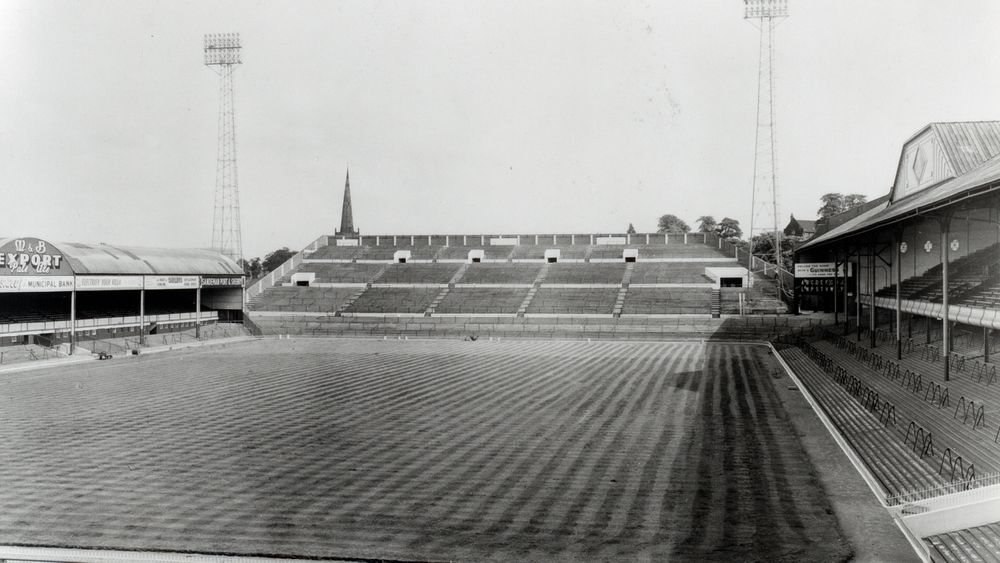
51. After years as an open terrace, the Holte End has a roof erected in 1962.
52. The following year, the famous barrel-roof of the Witton Lane stand is replaced by a more modern construction.
53. Throughout the 1965-66 season, 2,290 seats are installed in the paddock of the Witton Lane stand.
54. England’s hosting on the 1966 World Cup finals includes three group games at Villa Park, involving Argentina, Spain and West Germany. Around 6,000 temporary bench seats are installed on the open Witton Lane terrace.
55. The Lions Club is opened in 1967, having been built on the site of the former bowling green in Trinity Road.
56. Two days before Christmas in 1970, Villa beat Manchester United 2-1 in a League Cup semi-final regarded as one of the club’s greatest moments. Vic Crowe’s side are in the Third Division, while United’s line-up includes George Best, Bobby Charlton, Dennis Law and Brian Kidd.
57. The famous AV floodlights, featuring lamps indicating the club’s initials, are switched on for the time at an FA Cup semi-final replay between Arsenal and Stoke City in March 1971.
58. Villa’s 2-1 win over promotion rivals Bournemouth in February 1972 is watched by 48,110 – then a record attendance for the old Third Division.
59. Later that month, Brazilian legend Pele is here with Santos for a prestigious friendly which attracts a crowd of 54,437.
60. Another major boxing event is staged here in June 1972, Danny McAlinden beating Jack Bodell to win the British & Empire heavyweight crown.
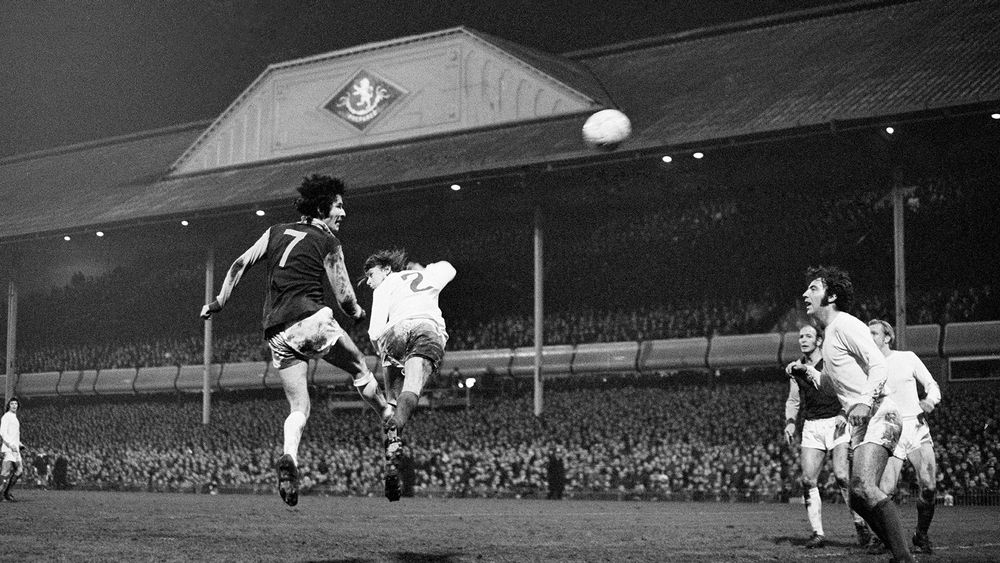
61. The stadium’s first executive boxes are installed in the Trinity Road stand in 1972, the lower tier terracing having been replaced by seats the previous year.
62. Third Division champions Villa lose 1-0 to Manchester City in the 1972 Charity Shield after First Division champions Derby County and FA Cup holders Leeds United decline to take place in the traditional season curtain-raiser.
63. Barry White becomes the first pop star to perform at Villa Park when he appears here with his Love Unlimited Orchestra in summer 1975.
64. October 1975, and Villa Park stages a European tie for the first time. Sadly it’s not an occasion to savour, Ron Saunders’ side losing 1-0 to Royal Antwerp following a 4-1 first-leg defeat in Belgium.
65. Charlie Aitken makes the last of his club record 660 appearances against QPR on 31st January 1976, taking his total of Villa Park games to 334. (Pictured below when he broke the previous appearance record.)
66. Later that year, Villa become one of the first clubs in the country to introduce a computerised ticketing system, at a cost of £32,000.
67. A friendly against Scottish giants Glasgow Rangers in October 1976 is abandoned after 53 minutes following the worst crowd disturbances ever witnessed here.
68. Champions Liverpool are humbled 5-1 at Villa Park in December 1976 as Villa produced arguably the finest 45 minutes in the club’s history. All the goals are scored in an amazing first half.
69. Declining revenue results in the closure of the Lions Club in 1977 and for nearly two decades afterwards the building is used as the club’s main souvenir shop.
70. The North Stand, built to replace the old Witton End terrace, is used for the first time for the match against Everton in August 1977 and is fully operational by the end of October.
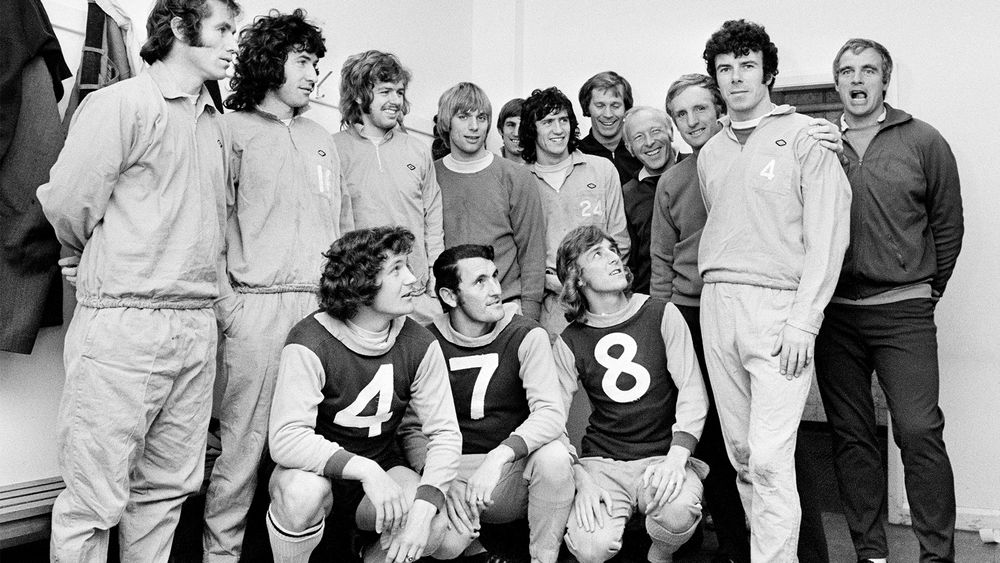
71. Andy Gray scores Villa’s first European goal on home soil – a header in a 4-0 UEFA Cup victory over Turkish club Fenerbahce in September 1977.
72. Dutch master Johan Cruyff makes his final appearance in this country in March 1978. The Barcelona star is giving a standing ovation when he is substituted eight minutes from the end. The attendance of 49,619 is Villa’s Park’s highest for a European tie.
73. An electronic scoreboard is used for the first time at the match against Liverpool in January 1981.
74. Liverpool beat West Ham 2-1 as we host our first and only League Cup final replay on 6th April 1981.
75. The club’s first league title in 71 years isn’t secured until the following week, but the key moment is a 3-0 home win over Middlesbrough in the final home match of the 1980-81 campaign.
76. The last significant remnants of the Lower Grounds – the old offices and gymnasium – are demolished in the summer of 1981.
77. Villa Park’s first European Cup tie – a 5-0 romp against the Icelandic part-timers of Valur in September 1981. Tony Morley is the scorer of Villa Park’s first European Cup goal.
78. Just 167 people – comprising club officials, press and police – attend the European Cup tie against Besiktas of Turkey in September 1982. UEFA order that the match must be played behind closed doors following trouble at the previous season’s semi-final against Anderlecht in Brussels.
79. Eight months after being crowned champions of Europe, Villa win a European trophy on home soil in January 1983, beating Barcelona 3-0 after extra-time in the second leg of the UEFA Super Cup. (See the highlights below.)
80. On a cold Friday night in 1984, a game is broadcast live from Villa Park for the first time, the TV audience plus 19,566 at the ground witnessing a 3-1 defeat by Liverpool.
81. A series of prayer meetings by American evangelist Billy Graham attract a combined total of over 257,000 people to the stadium in the summer of 1984. Five years later, Archbishop Desmond Tutu stages another religious gathering.
82. Gridiron comes to B6 in August 1985 when we host the British Superbowl, the London Ravens beating Streatham Olympians 45-7.
83. The club purchase the Colmore Depot on Witton Lane in 1986. The building is re-opened as the Stumps indoor cricket centre and is now The Academy, complete with four five-a-side pitches.
84. In July 1987, over 16,000 people attend a two-day Jehovah’s Witnesses convention
85. Rock legend Bruce Springsteen plays two gigs in front of 40,000 audiences during his Tunnel of Love tour in June 1988.
86. One of the four 180-foot tall floodlight pylons is dismantled in 1989 as the club switch to lighting along the roof of the stands.
87. The roof of the Holte End is extended to the front of the terracing in 1990 but the new structure lasts for just four years before the terrace is demolished.
88. Having been on target at Ipswich Town in the opening game, Dalian Atkinson scores our first home goal in the new FA Premier League, in a 1-1 draw against Leeds United in August 1992.
89. The upper tier of the new Doug Ellis stand is used for the first time at the match against Blackburn on New Year’s Day 1994.
90. Just under two months later, Villa Park’s first penalty shoot-out results in a 5-4 victory for Ron Atkinson’s side over Tranmere Rovers in the League Cup semi-final.
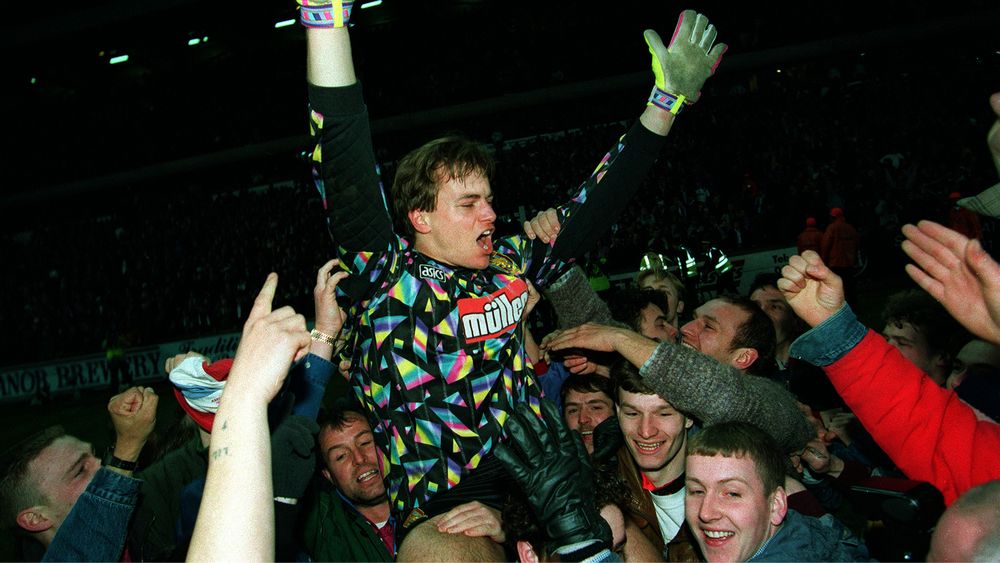
91. The famous Holte End terrace – once the largest behind-the-goal enclosure in Europe – is used for the last time as Villa beat Liverpool 2-1 in the final home match of 1993-94.
92. The new, two-tier, all-seated Holte End is fully operational for the first time at the home game against Chelsea on 28th December 1994. The new stand can seat 13,500 supporters.
93. With the away section of Carrow Road sold out, thousands of fans sit on the Holte End on Sunday 14th May 1995 to watch the crucial final game of the season against Norwich City on a giant video screen.
94. Brazil beat Sweden 1-0 in the Umbro Cup – a competition staged partly as a rehearsal for Euro 96 – on 4th June 1995.
95. Four matches are played here as part of England’s staging of Euro 96 – three group games involving Holland, Scotland and Switzerland, plus the quarter-final between the Czech Republic of Portugal.
96. During the same year the Villa Village is opened, offering supporters a vast range of official club merchandise.
97. Villa Park’s centenary is celebrated by a host of activities before the match against Tottenham Hotspur on 19th April 1997
98. The arrival of £7m club record signing Stan Collymore sends season ticket sales for the 1997-98 campaign soaring past 20,000 for the first time.
99. Dwight Yorke scores the last of his 37 Premier League home goals for the club with a cheeky-chip penalty past Arsenal keeper David Seaman. Yorke has scored more Premier League goals at Villa Park than any other player.
100. Villa Park is the setting for the 37th and last European Cup Winners Cup final in May 1999, Italians Lazio beat Spain’s Real Mallorca 2-1.
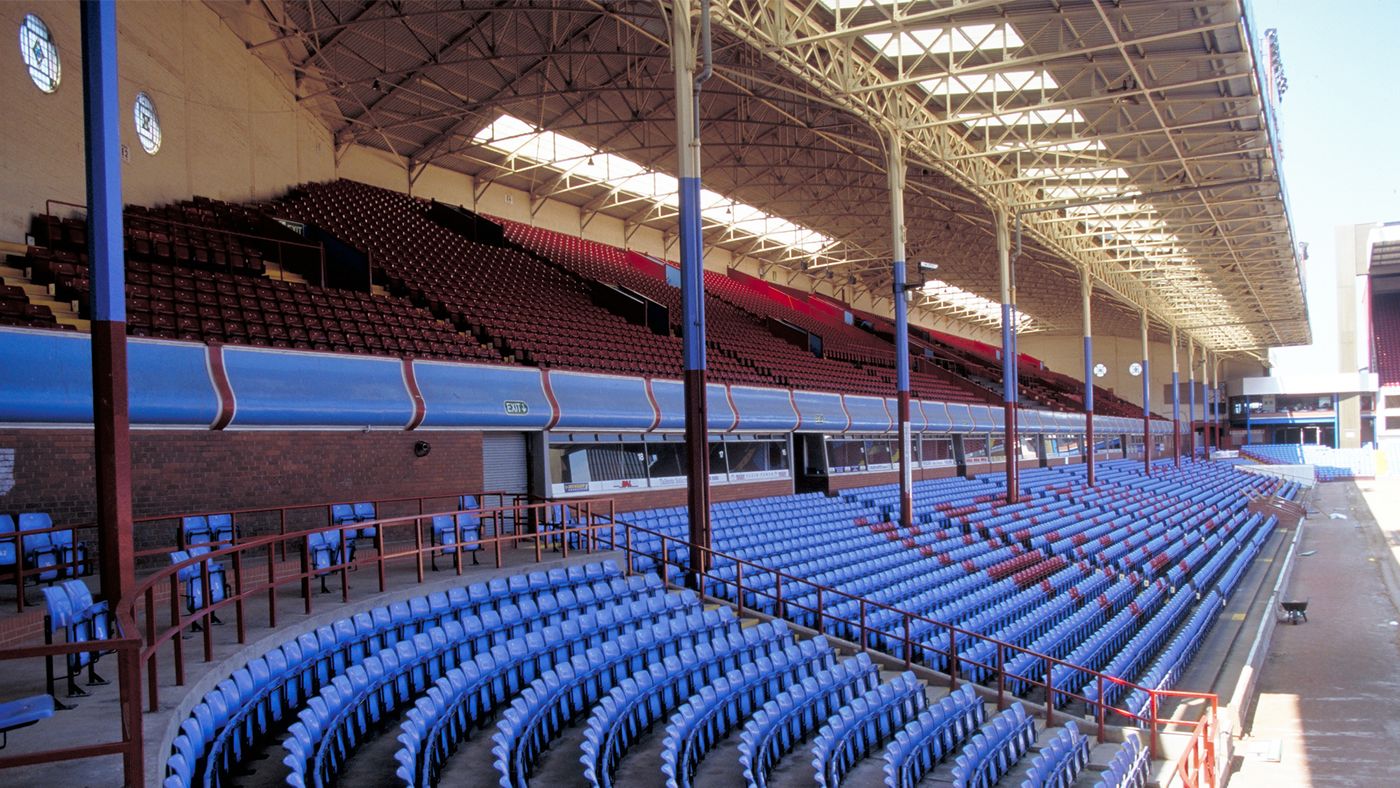
Villa Park. 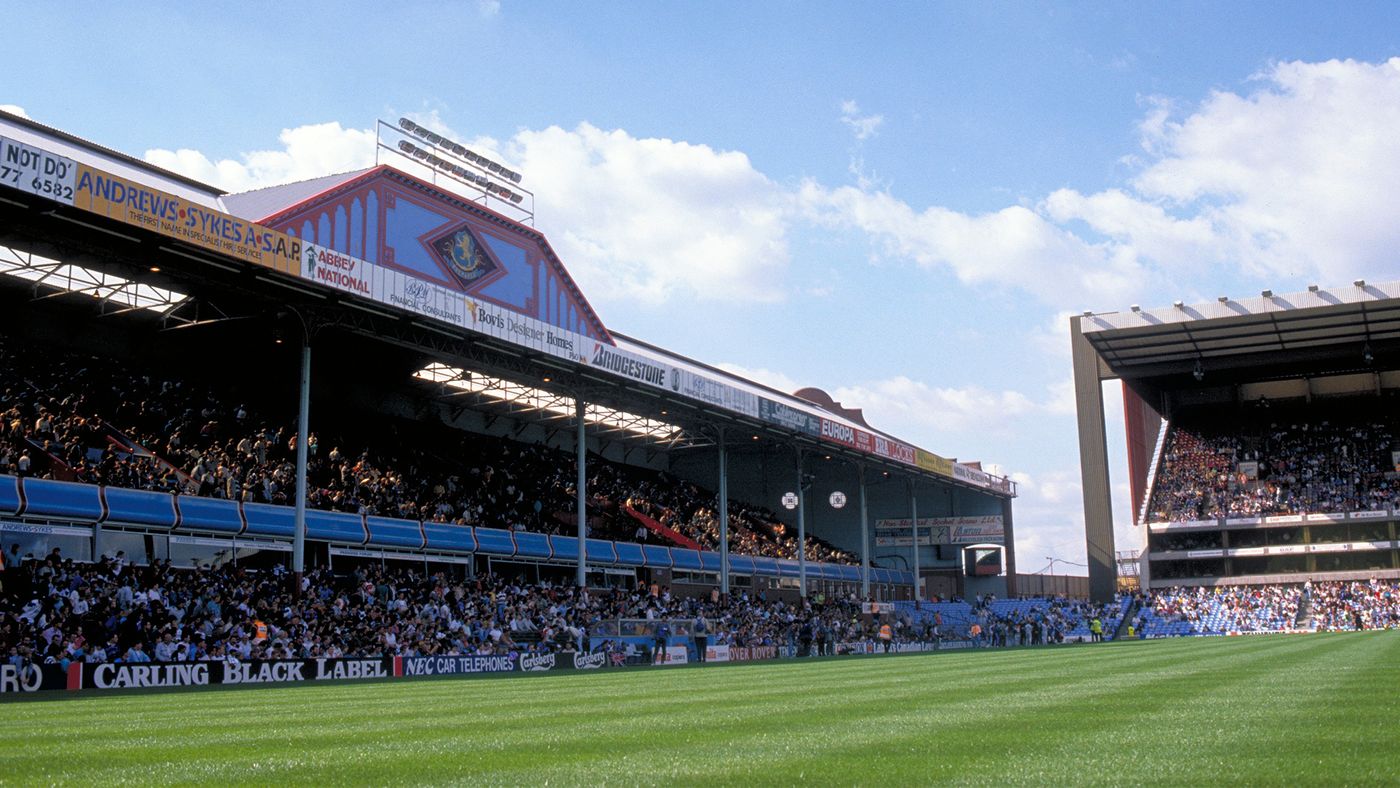
Villa Park. 
Villa Park. 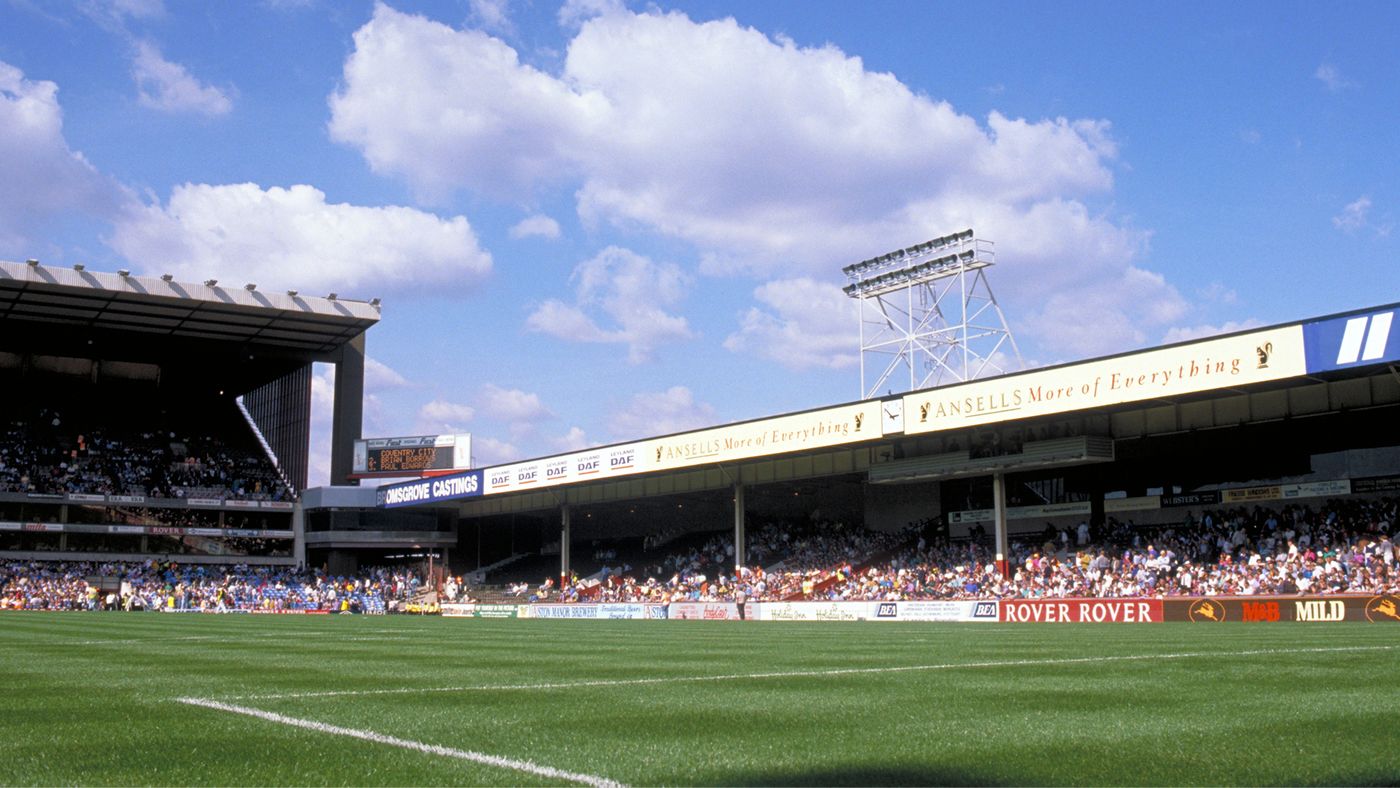
Villa Park. 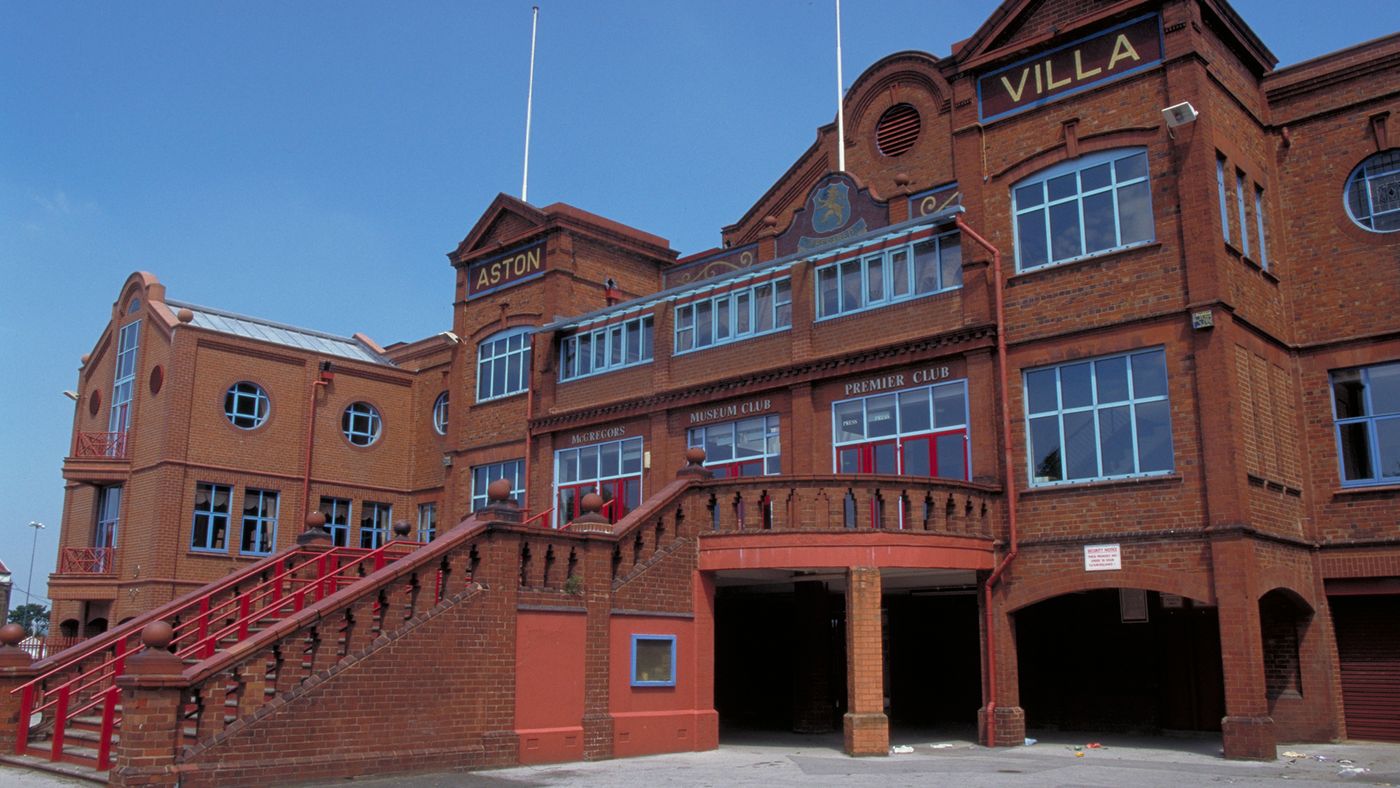
Villa Park. 
Villa Park. 
Villa Park. 
Villa Park. 
Villa Park.
101. The new Trinity Road stand is fully operational for the first time as England beat Spain 3-0 in February 2001.
102. With Wembley being rebuilt, we host the finals of both the FA Trophy and FA Vase for the first time in May 2001.
103. Our second European triumph on home soil is achieved by a 4-1 victory over Swiss club Basel in the second leg of the Intertoto Cup final in August 2001.
104. Villa go to the top of the Premier League for the first time in October 2001 with a 3-2 home win over Bolton Wanderers. Juan Pablo Angel scorestwice, with Daruis Vassell also on target.
105. The new Trinity Road stand is officially opened by HRH Prince Charles in November 2001.
106. A piece of club history is created on the opening day of 2005-06 when all four goals in a 2-2 draw against Bolton are scored in the first nine minutes.
107. Manchester United beat Watford 4-1 in April 2007 in the last FA Cup semi-final to be staged here.
108. Stephen Farthing’s giant painting of Villa Park, measuring 9m by 4m, is installed on the wall of the Trinity Road stand reception in 2009.
109. A statue of club legend William McGregor – the man who founded the Football League in 1888 – is unveiled outside the Trinity Road stand reception.
110. An capacity attendance of 42,788 – a record for Villa Park as an all-seater stadium – is set three times during the 2009-10 season, for the games against Liverpool, Manchester United and Birmingham City.
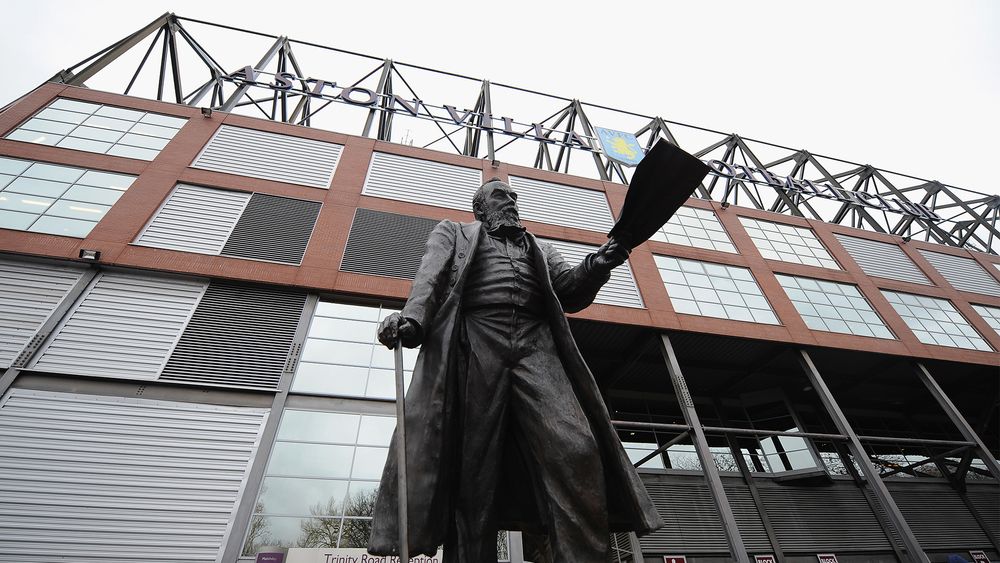
111. One of the most memorable matches of recent times sees Villa beat Blackburn Rovers 6-4 in the second leg of the 2010 League Cup semi-final.
112. Winger Marc Albrighton has the distinction of scoring the 20,000th Premier League goal in December 2011, the winger netting in Villa’s 2-1 defeat by Arsenal.
113. Skipper Stiliyan Petrov makes an emotional appearance with his family at the match against Chelsea in March 2012, just 24 hours after being diagnosed with acute leukaemia.
114. Three weeks later, HRH Prince William, the club’s most prestigious supporter, pays us a visit for the goalless draw against Sunderland.
115. In August that year, with Wembley hosting the Olympic football competition, Villa stage the Community Shield match, Manchester City beating Chelsea 3-2.
116. Gabby Agbonlahor’s goal in a 6-1 victory over Sunderland in April 2013 makes him Villa’s record Premier League scorer.
117. A Founders Lamp, commemorating Villa’s formation in 1874, is unveiled outside the Holte End before the game against Southampton in November 2014.
118. A 2-0 sixth-round win over Albion in March 2015 is the first FA Cup quarter-final to be played here since 1960.
119. Villa Park hosts two games on consecutive days at the 2015 Rugby World Cup – South Africa v Samoa and Australia v Uruguay.
120. Nassef Sawiris and Wes Edens arrive for pictures at Villa Park after buying a majority stake in Aston Villa in July 2018, marking the start of a new era for the club.
121. Two goals in four minutes from Conor Hourihane and Tammy Abraham stun West Brom as Villa take a 2-1 win in their Championship play-off semi-final first leg, reaching the Premier League soon after by beating Derby County in the final.
122. After a three-month shutdown due to the Covid-19 pandemic, the Premier League returns at Villa Park in June 2020 as Aston Villa and Sheffield United play out a 0-0 draw behind closed doors.
123. Villa produce a stunning display to thrash champions Liverpool 7-2 in B6, starting a league campaign with three successive wins for the first time since the 1962/63 season.
124. Fans return for the first time in 15 months as 10,000 supporters watch Villa beat Chelsea 2-1 in the club’s 1,000th Premier League fixture.
125. Steven Gerrard’s reign as Aston Villa head coach begins with a 2-1 victory against Brighton and Hove Albion, with Ollie Watkins and Tyrone Mings scoring late on.